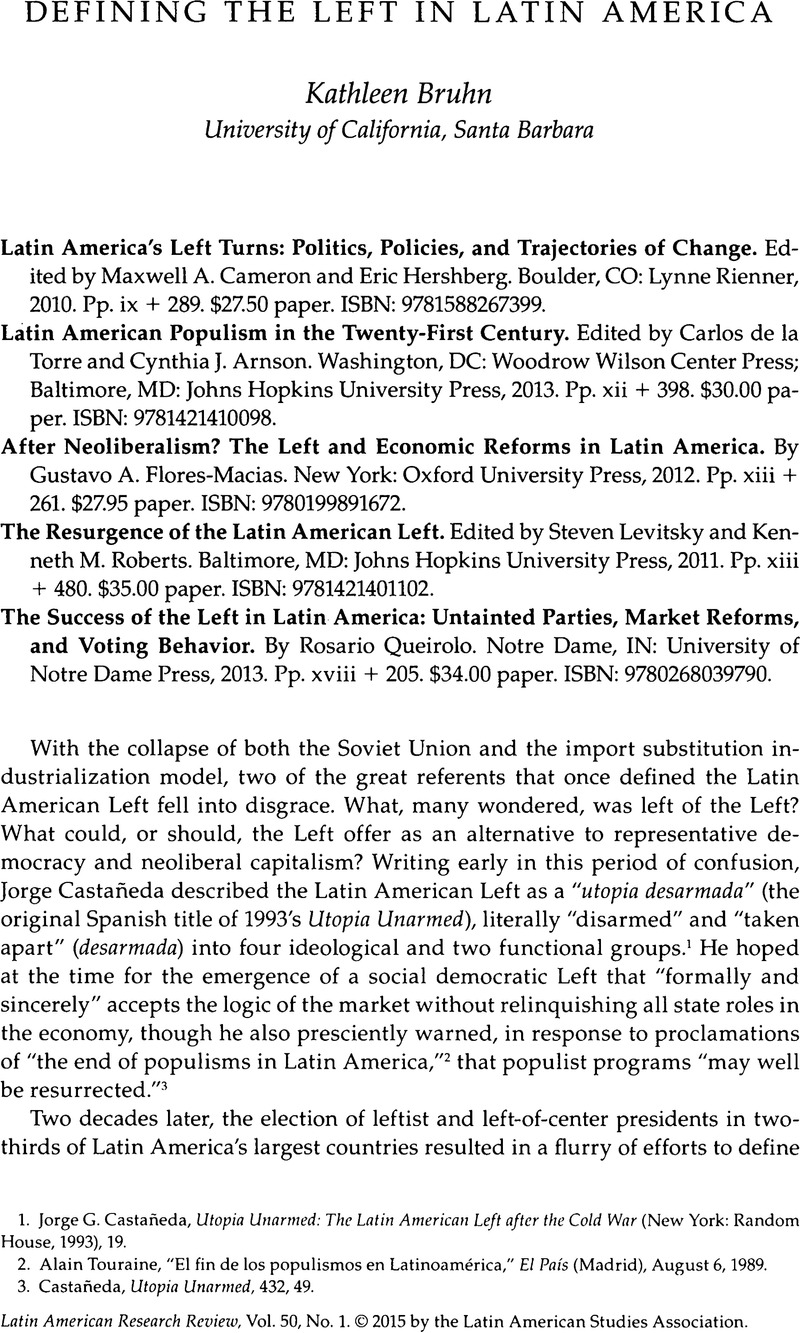Published online by Cambridge University Press: 05 September 2022

1. Jorge G. Castañeda, Utopia Unarmed: The Latin American Left after the Cold War (New York: Random House, 1993), 19.
2. Alain Touraine, “El fin de los populismos en Latinoamérica,” El País (Madrid), August 6, 1989.
3. Castañeda, Utopia Unarmed, 432, 49.
4. Jorge G. Castañeda, “Latin America's Left Turn,” Foreign Affairs 85, no. 3 (2006): 29, 41–42.
5. A sampling of these works includes Nicolás Lynch, “What the ‘Left’ Means in Latin American Now,” Constellations 14, no. 3 (2007): 373-383; Francisco E. Panizza, “The Social Democratization of the Latin American Left,” Revista Europea de Estudios Latinoamericanos y del Caribe 79 (2005): 95-103; Jeffery R. Webber and Barry Carr, eds., The New Latin American Left: Cracks in the Empire (Lanham, MD: Rowman and Littlefield, 2013); Kurt Weyland, Raúl L. Madrid, and Wendy Hunter, eds., Leftist Governments in Latin America: Successes and Shortcomings (New York: Cambridge University Press, 2010).
6. The literature on populism in Latin America is voluminous; references include David Doyle, “The Legitimacy of Political Institutions: Explaining Contemporary Populism in Latin America,” Comparative Political Studies 44, no. 11 (2011): 1447-1473; Rudiger Dornbusch and Sebastian Edwards, The Macroeconomics of Populism in Latin America, Working Paper Series 316 (Washington, DC: World Bank, 1989); Sebastian Edwards, Left Behind: Latin America and the False Promise of Populism (Chicago: University of Chicago Press, 2010); Kenneth Roberts, “Neoliberalism and the Transformation of Populism in Latin America,” World Politics 48, no. 1 (1995): 82-117; and Kurt Weyland, “Neoliberal Populism in Latin America and Eastern Europe,” Comparative Politics 31, no. 4 (1999): 379–403.